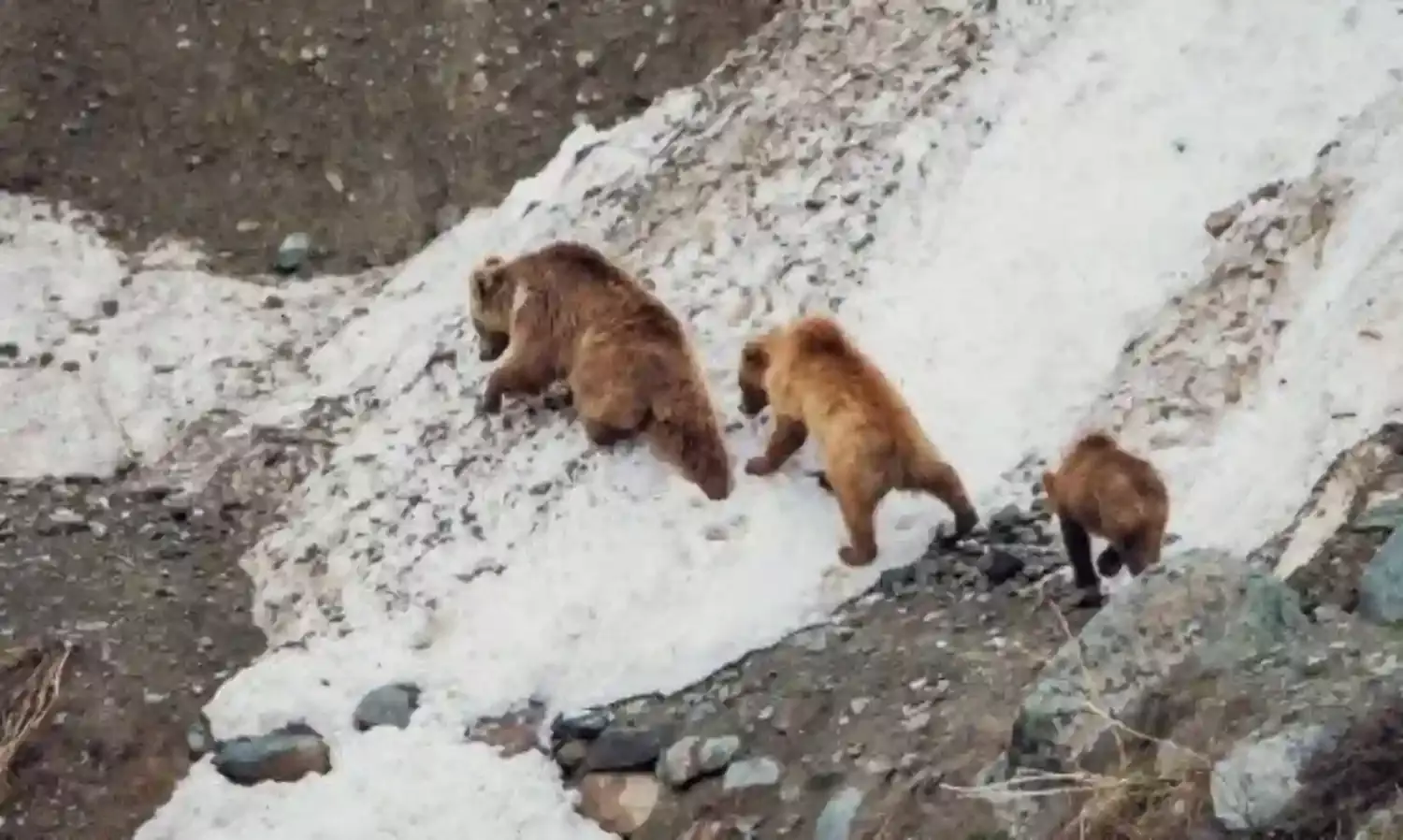Brown Bears Edge Closer to Human Habitation in Kashmir
Experts blame rapid habitat loss;

SRINAGAR: The spotting of critically endangered Himalayan brown bears in Jammu and Kashmir has somehow delighted wildlife enthusiasts who say it indicates rising population of the rare species. However experts blame reckless development and tourism activities at high altitudes that have significantly disrupted the habitat of the bear, forcing it to venture close to human habitation for survival.
The brown bear is the biggest animal in Kashmir with adults weighing in at 250 kilos or more. They live at an altitude of 2,000 to 2,500 metres mostly above the tree line. The species is found across the world, but its Himalayan counterpart in the northern mountainous areas of India and Pakistan is critically endangered. In the subcontinent brown bears have made a home in Pakistan, Pakistan occupied Kashmir, Uttarakhand, Himachal Pradesh and J&K.
Brown bears feed on insects, small crustaceans, alpine bulbs and the roots of plants, shoots of young grasses, domestic goats, sheep, and voles. They feed actively from 1-2 hours before sunrise and again for several hours in the late afternoon and evening. They are nocturnal, and their sense of smell is acutely developed and believed to be their principal means of finding food.
Wildlife conservationists in Kashmir have noted increasing sightings and spread of the brown bear in the last two to three years in a few of its habitats, including the hills of Sonamarg, Drass, Kupwara, Pahalgam, the Pir-Panjal range and Gurez in the Bandipora district.
A wildlife official said requesting anonymity that such animals have been found in large numbers in human habitation for many years which is an alarming situation. "Last year, two such animals were sighted in the Dumail area of Baltal near the Amarnath cave shrine, besides which three were sighted in the Drass sector of Ladakh," he said.
"Earlier, two bears were sighted in Pahalgam while evidence is also coming from other areas where the animal was spotted," he said, adding that the number of these animals was very good even earlier, but they never came to peopled areas.
The official said that the bear was also spotted in Shahgund village in the Bandipora district recently. However, the wildlife department successfully managed to catch the animal. Several critically endangered Himalayan brown bears were also sighted in the Gurez tehsil, in the village of Khandyal, while another similar bear was seen crossing the Kishanganga dam site.
The official believes that the latest sighting indicates the population of the endangered animal is rising in Kashmir. He said that earlier his team would have to trek through difficult border terrain for 3 hours to spot these animals but now they are also commonly found near human settlements.
According to Aaliya Mir, project head, Wildlife SOS, rapid infrastructure development in the area and increased tourism has significantly disrupted the habitat of the Himalayan brown bear, forcing it to venture close to human habitation for survival.
Citing the destruction of its habitat due to massive construction, increased military and nomad footprint, and tourist trekking destinations, Mir said that such animals have been seen in residential areas for a few years now, with frequent sightings reported in the croplands, market places, hotel premises, security camps, and residential areas.
Mir futher said that the more we interfere with the habitat of these animals, the further it will descend to the residential areas. The peaceful survival of the brown bear depends on the availability of suitable habitat, food and water in its sanctuary, she said, adding that numerous bears have started relying on trash and food waste generated by humans at campsites, hotels, and restaurants for sustenance.

